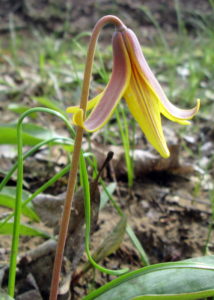This morning Mae (canine companion) and I took a 2 mile walk along Wagner Road, then back through the woods on our hill trail. It wasn’t specifically a spring wildflower walk but we found enough of them to write a report.
What spring wildflowers we found
- Golden ragwort about which I wrote a blog post in 2012
- Common violets
- Spring beauties in abundance
- Bluets, my favorites – so tiny!
- Cut-leaved toothwort
- Dandelions, this is an interesting article about invasive species in a great little Ohio publication, “Farm & Dairy.”
- May-apples (not in bloom but in bud)
- Coltsfoot
- Blue phlox
- Rue anenome
Check out the Ohio Department of Natural Resources Wildflower report every week through spring. And print your own Ohio spring wildflower checklist.
And if you are really interested in wildflowers in the spring, check out my blog posts from the past:
- Spring wildflowers in the Hocking Hills (2023)
- A very short wildflower walk (2018)
- Hocking Hills wildflowers right now (2007)
Mary at Marsh Hollow






